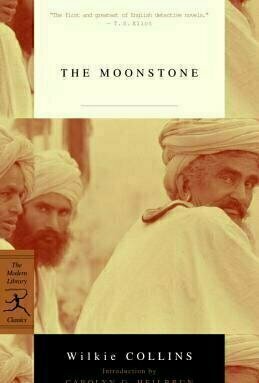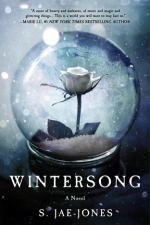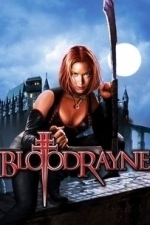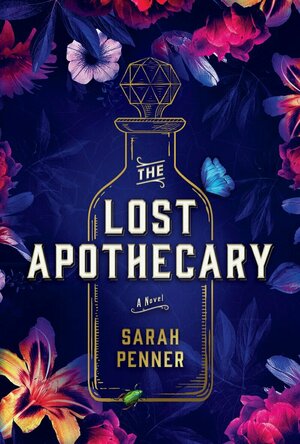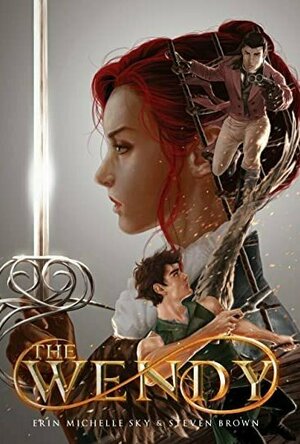Search
Search results
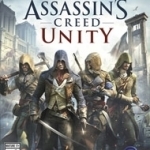
Assassin's Creed Unity
Video Game
Paris, 1789 - The French Revolution turns a once-magnificent city into a place of terror and chaos....
Phil Leader (619 KP) rated The Moonstone in Books
Nov 20, 2019
Of all the books I had to read at school, The Moonstone was probably the only novel I really enjoyed. It is one of the first 'whodunnit' type of books and, remarkably, it manages to hit virtually every requirement of the genre dead centre. If this book was written today, it would still be a classic.
The Moonstone of the title is a rare yellow diamond, stolen from an Indian shrine by colonialists. Thought to be unlucky it is left to the young Rachel Verinder. The night after her 18th birthday party the stone is stolen from her rooms, and the rest of the novel describes how the various players eventually manage to solve the crime.
The plot features twists and turns galore, false trails and red herrings enough for two detective stories. Although the crime involved is 'only' theft rather than the more usual murder it is no less engaging as a story. The characters are well drawn and - social reformer that Collins was - there are strong women and intelligent and interesting servants as well as the landed gentry and philanthropists that inhabit the world of country estates in the mid 19th century that the novel is set in.
One feature of the book is that the story is told from the viewpoint of a number of the players. Firstly (and for nearly half the book) we are introduced to the Verinders and the theft by Gabriel Betteredge, a long serving family retainer who is head of the staff and a sort of de facto butler. Betteredge's narrative is charming and witty, full of dry asides and observations. His habit of picking passages from Robinson Crusoe and applying them to daily life is a quirk that is completely in keeping with his character.
Once the story moves to London, the narrative is taken up by various other characters, sometimes just for a short journal entry, sometimes for extended periods of time. Collins imbues each of these parts with a different voice really skillfully, keeping each character very separate.
The solution to the mystery of who stole the diamond and why is convoluted but also very simple. The whole story is well crafted and fits together really well.
The only negative points really are those imposed on Collins by the time he was writing this. There is an overlong introduction about the diamond in India (it seems that in Victorian novels the long winded introduction is somehow expected by the reader) and the pace slows somewhat in London as there is a lot of description about the character's social standings and financial affairs that just aren't as relevant today.
Nevertheless this really is as good a book as I remember. I certainly rate Collins a lot higher than Charles Dickens as a writer. Definitely recommended for anyone who likes a detective mystery which will keep the reader guessing until the very end.
The Moonstone of the title is a rare yellow diamond, stolen from an Indian shrine by colonialists. Thought to be unlucky it is left to the young Rachel Verinder. The night after her 18th birthday party the stone is stolen from her rooms, and the rest of the novel describes how the various players eventually manage to solve the crime.
The plot features twists and turns galore, false trails and red herrings enough for two detective stories. Although the crime involved is 'only' theft rather than the more usual murder it is no less engaging as a story. The characters are well drawn and - social reformer that Collins was - there are strong women and intelligent and interesting servants as well as the landed gentry and philanthropists that inhabit the world of country estates in the mid 19th century that the novel is set in.
One feature of the book is that the story is told from the viewpoint of a number of the players. Firstly (and for nearly half the book) we are introduced to the Verinders and the theft by Gabriel Betteredge, a long serving family retainer who is head of the staff and a sort of de facto butler. Betteredge's narrative is charming and witty, full of dry asides and observations. His habit of picking passages from Robinson Crusoe and applying them to daily life is a quirk that is completely in keeping with his character.
Once the story moves to London, the narrative is taken up by various other characters, sometimes just for a short journal entry, sometimes for extended periods of time. Collins imbues each of these parts with a different voice really skillfully, keeping each character very separate.
The solution to the mystery of who stole the diamond and why is convoluted but also very simple. The whole story is well crafted and fits together really well.
The only negative points really are those imposed on Collins by the time he was writing this. There is an overlong introduction about the diamond in India (it seems that in Victorian novels the long winded introduction is somehow expected by the reader) and the pace slows somewhat in London as there is a lot of description about the character's social standings and financial affairs that just aren't as relevant today.
Nevertheless this really is as good a book as I remember. I certainly rate Collins a lot higher than Charles Dickens as a writer. Definitely recommended for anyone who likes a detective mystery which will keep the reader guessing until the very end.
B1
Brooks's, 1764-2014: The Story of a Whig Club
Hugh Johnson, John Ingamells, Philipp Ziegler and Charles Sebag-Montefiore
Book
One of the many aspects of London that never failed to attract comment from foreign visitors in the...
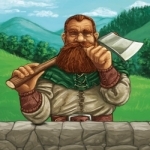
Glass Road
Games
App
Glass Road is the official digital version of Uwe Rosenberg's Glass Road board game. STORY: The...
Goddess in the Stacks (553 KP) rated Wintersong in Books
Dec 27, 2018
So I knew this was inspired by Jim Henson's Labyrinth. That's partially why I picked it up, as I love that movie and David Bowie as the Goblin King. I didn't expect to get, basically, Labyrinth fanfiction. That was my first impression. As the book carries on, though, and especially as you get into the second book, it's more like a musician's fever-dream of their favorite childhood movie. There are so many elements taken from the movie, but they are deconstructed and put back together in such unexpected ways.
You'll recognize a line or two from the movie. The fairies still bite. The Goblin King is still beautiful and angular and strange. Liesl's after a stolen sibling. But Liesl and her family live in rural, probably 18th century Bavaria. She is not a spoiled, baby-sitting half-sister. Her grandmother has taught her the old stories, and unbeknownst to her, she's played music for The Goblin King her entire childhood.
The first book concerns Liesl's first foray into the Underground to save her sister when The Goblin King steals her to be his bride. This is where the acid trip starts. If you're familiar with Labyrinth, remember the ballroom scene? With people whirling about and appearing and disappearing and mirrors and the sense of disorientation as it all falls apart? Yeah, that's basically the entire time in the Underground. Though there is a ball scene, and it is especially trippy.
While Liesl manages to save her sister (that's a spoiler, but it isn't much of one), she has a harder time saving herself. Whether she actually does or not could be debated.
The second book of the duology, Shadowsong, has an interesting author's note in the front of it. The author first gives a content warning for self-harm, suicidal ideations, addiction, and reckless behaviors. She goes on to say Liesl has bipolar disorder, and further, that so does she. (The author.) She says Wintersong was her bright mirror, and Shadowsong her dark one. I can see that. Wintersong is a much happier book than Shadowsong, but the story would be incomplete without both books. Wintersong does end in a satisfactory conclusion, but Shadowsong just completes the tale in a way that I, at least, really enjoyed.
Shadowsong also contains more throwbacks to the movie - she falls and is caught by goblin hands; goblins form a giant face that talks to her about the old laws. These things don't happen in the same scene, though.
I loved the elements of music woven throughout the story; Liesl is a composer, and music - her music - is almost a character in its own right. It's definitely a huge plot element. It's in her connection to her brother, and her connection to The Goblin King. It's her way into the Underground, and her way out, and her way to reach back in.
It's an enchanting duology; I don't know if it would be as good for someone who didn't love Labyrinth the way I do. If you dislike the movie, I would probably advise against reading these. But if you like it or have simply never seen it, these would be good, atmospheric books to read in the dead of winter.
You can read all my reviews at http://goddessinthestacks.com
You'll recognize a line or two from the movie. The fairies still bite. The Goblin King is still beautiful and angular and strange. Liesl's after a stolen sibling. But Liesl and her family live in rural, probably 18th century Bavaria. She is not a spoiled, baby-sitting half-sister. Her grandmother has taught her the old stories, and unbeknownst to her, she's played music for The Goblin King her entire childhood.
The first book concerns Liesl's first foray into the Underground to save her sister when The Goblin King steals her to be his bride. This is where the acid trip starts. If you're familiar with Labyrinth, remember the ballroom scene? With people whirling about and appearing and disappearing and mirrors and the sense of disorientation as it all falls apart? Yeah, that's basically the entire time in the Underground. Though there is a ball scene, and it is especially trippy.
While Liesl manages to save her sister (that's a spoiler, but it isn't much of one), she has a harder time saving herself. Whether she actually does or not could be debated.
The second book of the duology, Shadowsong, has an interesting author's note in the front of it. The author first gives a content warning for self-harm, suicidal ideations, addiction, and reckless behaviors. She goes on to say Liesl has bipolar disorder, and further, that so does she. (The author.) She says Wintersong was her bright mirror, and Shadowsong her dark one. I can see that. Wintersong is a much happier book than Shadowsong, but the story would be incomplete without both books. Wintersong does end in a satisfactory conclusion, but Shadowsong just completes the tale in a way that I, at least, really enjoyed.
Shadowsong also contains more throwbacks to the movie - she falls and is caught by goblin hands; goblins form a giant face that talks to her about the old laws. These things don't happen in the same scene, though.
I loved the elements of music woven throughout the story; Liesl is a composer, and music - her music - is almost a character in its own right. It's definitely a huge plot element. It's in her connection to her brother, and her connection to The Goblin King. It's her way into the Underground, and her way out, and her way to reach back in.
It's an enchanting duology; I don't know if it would be as good for someone who didn't love Labyrinth the way I do. If you dislike the movie, I would probably advise against reading these. But if you like it or have simply never seen it, these would be good, atmospheric books to read in the dead of winter.
You can read all my reviews at http://goddessinthestacks.com
Goddess in the Stacks (553 KP) rated Shadowsong (Wintersong #2) in Books
Dec 27, 2018
So I knew this was inspired by Jim Henson's Labyrinth. That's partially why I picked it up, as I love that movie and David Bowie as the Goblin King. I didn't expect to get, basically, Labyrinth fanfiction. That was my first impression. As the book carries on, though, and especially as you get into the second book, it's more like a musician's fever-dream of their favorite childhood movie. There are so many elements taken from the movie, but they are deconstructed and put back together in such unexpected ways.
You'll recognize a line or two from the movie. The fairies still bite. The Goblin King is still beautiful and angular and strange. Liesl's after a stolen sibling. But Liesl and her family live in rural, probably 18th century Bavaria. She is not a spoiled, baby-sitting half-sister. Her grandmother has taught her the old stories, and unbeknownst to her, she's played music for The Goblin King her entire childhood.
The first book concerns Liesl's first foray into the Underground to save her sister when The Goblin King steals her to be his bride. This is where the acid trip starts. If you're familiar with Labyrinth, remember the ballroom scene? With people whirling about and appearing and disappearing and mirrors and the sense of disorientation as it all falls apart? Yeah, that's basically the entire time in the Underground. Though there is a ball scene, and it is especially trippy.
While Liesl manages to save her sister (that's a spoiler, but it isn't much of one), she has a harder time saving herself. Whether she actually does or not could be debated.
The second book of the duology, Shadowsong, has an interesting author's note in the front of it. The author first gives a content warning for self-harm, suicidal ideations, addiction, and reckless behaviors. She goes on to say Liesl has bipolar disorder, and further, that so does she. (The author.) She says Wintersong was her bright mirror, and Shadowsong her dark one. I can see that. Wintersong is a much happier book than Shadowsong, but the story would be incomplete without both books. Wintersong does end in a satisfactory conclusion, but Shadowsong just completes the tale in a way that I, at least, really enjoyed.
Shadowsong also contains more throwbacks to the movie - she falls and is caught by goblin hands; goblins form a giant face that talks to her about the old laws. These things don't happen in the same scene, though.
I loved the elements of music woven throughout the story; Liesl is a composer, and music - her music - is almost a character in its own right. It's definitely a huge plot element. It's in her connection to her brother, and her connection to The Goblin King. It's her way into the Underground, and her way out, and her way to reach back in.
It's an enchanting duology; I don't know if it would be as good for someone who didn't love Labyrinth the way I do. If you dislike the movie, I would probably advise against reading these. But if you like it or have simply never seen it, these would be good, atmospheric books to read in the dead of winter.
You can read all my reviews at http://goddessinthestacks.com
You'll recognize a line or two from the movie. The fairies still bite. The Goblin King is still beautiful and angular and strange. Liesl's after a stolen sibling. But Liesl and her family live in rural, probably 18th century Bavaria. She is not a spoiled, baby-sitting half-sister. Her grandmother has taught her the old stories, and unbeknownst to her, she's played music for The Goblin King her entire childhood.
The first book concerns Liesl's first foray into the Underground to save her sister when The Goblin King steals her to be his bride. This is where the acid trip starts. If you're familiar with Labyrinth, remember the ballroom scene? With people whirling about and appearing and disappearing and mirrors and the sense of disorientation as it all falls apart? Yeah, that's basically the entire time in the Underground. Though there is a ball scene, and it is especially trippy.
While Liesl manages to save her sister (that's a spoiler, but it isn't much of one), she has a harder time saving herself. Whether she actually does or not could be debated.
The second book of the duology, Shadowsong, has an interesting author's note in the front of it. The author first gives a content warning for self-harm, suicidal ideations, addiction, and reckless behaviors. She goes on to say Liesl has bipolar disorder, and further, that so does she. (The author.) She says Wintersong was her bright mirror, and Shadowsong her dark one. I can see that. Wintersong is a much happier book than Shadowsong, but the story would be incomplete without both books. Wintersong does end in a satisfactory conclusion, but Shadowsong just completes the tale in a way that I, at least, really enjoyed.
Shadowsong also contains more throwbacks to the movie - she falls and is caught by goblin hands; goblins form a giant face that talks to her about the old laws. These things don't happen in the same scene, though.
I loved the elements of music woven throughout the story; Liesl is a composer, and music - her music - is almost a character in its own right. It's definitely a huge plot element. It's in her connection to her brother, and her connection to The Goblin King. It's her way into the Underground, and her way out, and her way to reach back in.
It's an enchanting duology; I don't know if it would be as good for someone who didn't love Labyrinth the way I do. If you dislike the movie, I would probably advise against reading these. But if you like it or have simply never seen it, these would be good, atmospheric books to read in the dead of winter.
You can read all my reviews at http://goddessinthestacks.com
Gareth von Kallenbach (980 KP) rated BloodRayne (2006) in Movies
Aug 14, 2019
Turning a video game into a feature film is often a daunting task. With a large built in audience, gamers tend to be very picky over film adaptations and agitate very easily over even the slightest deviation from the source material.
Often in games, storylines are kept to the basic elements in order to keep the action flowing, unhindered by dialogue, character development, and plot twists as the notion is that gamers want action and will become bored if they have to wait through the elements listed above.
It is ironic that in films bases on games, the paring down of plot and characters in favor of a more linear setup and action often draws the wrath of critics and gamers for doing what game makers have been doing for years, letting gamers get to the goods.
In the new film Bloodrayne based on the hit game series of the same name by Majesco, Director Uwe Boll has crafted a film that explores the how and whys of the game series, focusing on the origins of the title character Rayne (Kristanna Loken), who toils as the half-human, half-vampire Dhampir in remote 18th century Romania as a freak in a traveling circus. Here ability to be burned by water yet healed by the blood of animals is a big drawing card to the circus, who has no problem exploiting her only to lock her in an animal cage when the show is over.
Unknown to Rayne, her fate is about to become entwined with a man named Vladamir (Michael Madsen), a vampire hunter and member of a secret society dedicated to eliminating the threat they pose. It is learned that the land is under the control of a powerful vampire named Kagan (Ben Kinglsey), who is seeking to locate and reunite three vampire relics in an effort to gain absolute power.
In time Rayne is brought into the order that sees her as a tool for fighting back the ever increasing army of Kagan. This movie is not met well by certain members of the group, especially Katarin (Michelle Rodriquez), who is not certain that bringing a person who is part vampire into their midst is a good idea.
Despite rising tensions and a steamy attraction to a hunter named Sebastian (Matt Davis), Rayne soon finds herself part of the group and firmly matched up against Kagan and his minions with the fate of the world in the balance.
While the film has some issues such as a thin plot and at times stiff acting and basic dialogue it is a marked improvement for Boll who has received harsh criticisms of his past works. Bloodrayne blends exotic visuals with classic gothic touches in a manner that compliments the material and is never heavy handed. The action scenes while gory are engaging and abundant, especially the inclusion of so called Boss battles that are common in video games.
While Bloodrayne has its blemishes, the film has its moments and is not nearly as bad as several mean spirited campaigns against it and Boll have suggested.
I have seen far worse films in the last 6 months such as The Cave, Into the Blue and Bewitched to name a few. As vampire films go, Bloodrayne is better than most of the horror offerings we have been inundated with in recent years less we forget “Wrong Turn” and “House of Wax”
Often in games, storylines are kept to the basic elements in order to keep the action flowing, unhindered by dialogue, character development, and plot twists as the notion is that gamers want action and will become bored if they have to wait through the elements listed above.
It is ironic that in films bases on games, the paring down of plot and characters in favor of a more linear setup and action often draws the wrath of critics and gamers for doing what game makers have been doing for years, letting gamers get to the goods.
In the new film Bloodrayne based on the hit game series of the same name by Majesco, Director Uwe Boll has crafted a film that explores the how and whys of the game series, focusing on the origins of the title character Rayne (Kristanna Loken), who toils as the half-human, half-vampire Dhampir in remote 18th century Romania as a freak in a traveling circus. Here ability to be burned by water yet healed by the blood of animals is a big drawing card to the circus, who has no problem exploiting her only to lock her in an animal cage when the show is over.
Unknown to Rayne, her fate is about to become entwined with a man named Vladamir (Michael Madsen), a vampire hunter and member of a secret society dedicated to eliminating the threat they pose. It is learned that the land is under the control of a powerful vampire named Kagan (Ben Kinglsey), who is seeking to locate and reunite three vampire relics in an effort to gain absolute power.
In time Rayne is brought into the order that sees her as a tool for fighting back the ever increasing army of Kagan. This movie is not met well by certain members of the group, especially Katarin (Michelle Rodriquez), who is not certain that bringing a person who is part vampire into their midst is a good idea.
Despite rising tensions and a steamy attraction to a hunter named Sebastian (Matt Davis), Rayne soon finds herself part of the group and firmly matched up against Kagan and his minions with the fate of the world in the balance.
While the film has some issues such as a thin plot and at times stiff acting and basic dialogue it is a marked improvement for Boll who has received harsh criticisms of his past works. Bloodrayne blends exotic visuals with classic gothic touches in a manner that compliments the material and is never heavy handed. The action scenes while gory are engaging and abundant, especially the inclusion of so called Boss battles that are common in video games.
While Bloodrayne has its blemishes, the film has its moments and is not nearly as bad as several mean spirited campaigns against it and Boll have suggested.
I have seen far worse films in the last 6 months such as The Cave, Into the Blue and Bewitched to name a few. As vampire films go, Bloodrayne is better than most of the horror offerings we have been inundated with in recent years less we forget “Wrong Turn” and “House of Wax”
Sophia (Bookwyrming Thoughts) (530 KP) rated Marie Antoinette, Serial Killer in Books
Jan 23, 2020
I only picked up <i>Marie Antoinette, Serial Killer</i> for two reasons: 1) Marie Antoinette is a serial killer. I <i>had</i> to see it. 2) I'm in need of a book that's less of a romance. Oh, and I need a break from all of the books out there that do before I blow a gasket. Really, it's for everyone's benefit.
This book is a fantastic break for me – it's <b>not a fluffy book set in Paris with a Paris romance</b> (though there <i>is</i> a sort-of Paris romance I'm totally peachy with), despite the fact Alender starts things off with a gruesome murder involving a head being chopped off by a ghost.
No, I did not actually enjoy reading a person getting her head chopped off by a flying broken mirror shard caused by a ghost. I might be a ninja and secretly evil, but I don't actually enjoy those kinds of things.
France's history in the late 18th century is quite intriguing – from helping the US with the American Revolution against the British and then entering their own Revolution against the monarchy a little over a decade later. Alender's book is <b>full of rich details involving French history and culture circulating the Revolution</b> (despite the fact some facts were liberated by Alender to fit the overall plot of the story) as Colette tours France with her classmates, questions her roots and her friendship with Hannah, and tries to figure out why she's seeing a Marie Antoinette lookalike everywhere.
<b>The amount of French the author uses throughout the book isn't overwhelming</b> – it's enough to keep the intrigue, but not enough where it'll be overly confusing and categorizing the book as a piece of French literature. Then again, it's probably helpful when 1) the main character isn't entirely proficient at French, and 2) the romance languages are so similar, I pretty much understand the basis of the conversations with my sliver understanding of Spanish and Italian.
On the overall basis of the book being well written, I had mixed feelings for Colette for awhile – she's both likable and not likable at the same time. She's not likable because <b>she just seems to have a very snobby attitude of sorts, tries too hard to fit in with the rich and wealthy at her private school, and spends her time being a doormat in the beginning of the book for fear of facing Hannah's wrath</b>. As the book goes on and everyone makes Colette questions her friendship with Hannah, Colette slowly becomes likable – someone who isn't snobby after all, and her ending with Hannah is quite fantastic. Of course, it does become a little obvious there's some sort of gap between their friendship (and growing) since Colette secretly rebels at times without Hannah's knowledge.
All in all, <i>Marie Antoinette, Serial Killer</i> is <b>a book about deception, loyalty, and how even the dead can come back for revenge to complete unfinished business before they can finally rest in peace.</b>
<a href="https://bookwyrmingthoughts.com/review-marie-antoinette-serial-killer-by-katie-alender/"; target="_blank">This review was originally posted on Bookwyrming Thoughts</a>
This book is a fantastic break for me – it's <b>not a fluffy book set in Paris with a Paris romance</b> (though there <i>is</i> a sort-of Paris romance I'm totally peachy with), despite the fact Alender starts things off with a gruesome murder involving a head being chopped off by a ghost.
No, I did not actually enjoy reading a person getting her head chopped off by a flying broken mirror shard caused by a ghost. I might be a ninja and secretly evil, but I don't actually enjoy those kinds of things.
France's history in the late 18th century is quite intriguing – from helping the US with the American Revolution against the British and then entering their own Revolution against the monarchy a little over a decade later. Alender's book is <b>full of rich details involving French history and culture circulating the Revolution</b> (despite the fact some facts were liberated by Alender to fit the overall plot of the story) as Colette tours France with her classmates, questions her roots and her friendship with Hannah, and tries to figure out why she's seeing a Marie Antoinette lookalike everywhere.
<b>The amount of French the author uses throughout the book isn't overwhelming</b> – it's enough to keep the intrigue, but not enough where it'll be overly confusing and categorizing the book as a piece of French literature. Then again, it's probably helpful when 1) the main character isn't entirely proficient at French, and 2) the romance languages are so similar, I pretty much understand the basis of the conversations with my sliver understanding of Spanish and Italian.
On the overall basis of the book being well written, I had mixed feelings for Colette for awhile – she's both likable and not likable at the same time. She's not likable because <b>she just seems to have a very snobby attitude of sorts, tries too hard to fit in with the rich and wealthy at her private school, and spends her time being a doormat in the beginning of the book for fear of facing Hannah's wrath</b>. As the book goes on and everyone makes Colette questions her friendship with Hannah, Colette slowly becomes likable – someone who isn't snobby after all, and her ending with Hannah is quite fantastic. Of course, it does become a little obvious there's some sort of gap between their friendship (and growing) since Colette secretly rebels at times without Hannah's knowledge.
All in all, <i>Marie Antoinette, Serial Killer</i> is <b>a book about deception, loyalty, and how even the dead can come back for revenge to complete unfinished business before they can finally rest in peace.</b>
<a href="https://bookwyrmingthoughts.com/review-marie-antoinette-serial-killer-by-katie-alender/"; target="_blank">This review was originally posted on Bookwyrming Thoughts</a>
Melanie Caldicott (6 KP) rated The Lost Apothecary in Books
Apr 29, 2021
Thanks to the publishers and NetGalley for the ARe-copy in exchange for this honest review. You can also read my review on my blog - https:roamingthroughbooks.wordpress.com
The Lost Apothecary by Sarah Penner is a novel which switches between the storylines of a female apothecary in the 1790s who sells poisons to women to kill men who have wronged them and the present day, in which Caroline happens upon a clue which leads her to investigate the apothecary’s story.
Well, the idea of an apothecary dispensing poison for women to use for murder was enticing to say the least. This book had the potential to weave a thought-provoking, adventurous tale, developing themes about womanhood, oppression and doing evil for good. Sadly, for me it did not quite meet the mark.
The narratives switch between three characters, Caroline, our present-day historian, Nella, the apothecary, and Eliza, a servant girl who becomes friends with Nella over the course of the book.
As I said, I was expecting this novel to grapple with challenging themes, which could have been very emotive and dark. Yet, it turned out to be just a bland bit of light fiction never dwelling on anything for too long, skimming over the surface of most of the characters, their motives and their reactions and lacking depth on any of the parallel-running plotlines.
It is surprising how a book surrounding multiple murders, historical medicine and herbalism and women trapped in marriages with infidels, letches and rapists could be quite so vanilla. It was a pleasant enough read, but lacked the substance I was hoping for.
I found Nella, the apothecary to be a bit of an enigma. We do learn about her back story and gain some insight into her motives for dispensing the poisons. However, for a woman who was resourceful enough to construct the whole clandestine operation we meet her in a weakened state and I grew frustrated with how she seemed to fall into an oblivious kind of dream-like manner becoming swept along by circumstance with no clear influence on the events or people around her.
Eliza, was a naïve girl who met Nella whilst running an errand for her mistress. It is not really clear why the friendship between Nella and Eliza develops, it seems to be more for the convenience of the plot than due to real concrete reasoning. However, an intimacy develops between them which has the potential to bring new colour to the characters. But yet again, Penner seems to skim the surface of going to any depths and I was left feeling robbed of any insight into the emotional and kindred aspects of their friendship.
Finally, Caroline’s story in the present day brought a different perspective to the themes of womanhood running through this book. She parallels the wronged women of the 18th century by escaping to London on a trip she was supposed to take with her husband to celebrate their tenth wedding anniversary, but was instead travelling alone having discovered her husband had been having an affair.
I initially enjoyed Caroline’s historical investigations as they took her to The British Library and researching documents and newspapers there. As an avid genealogist I appreciated the details Penner gives about the sources of Caroline’s research and the challenges of finding the truth from historical documents.
Yet, again her story became somewhat contrived. It seemed unlikely that she would make some of the discoveries she did and her investigation became constructed around coincidence and unrealistic serendipity. Even the parallel storylines surrounding her relationship and those from the apothecary’s timeline seemed somewhat silly and phoney.
For me, the conclusion of the book yet again did not fully reconcile itself and therefore left me unmoved and feeling somewhat apathetic about the ending and the novel as a whole.
The Lost Apothecary by Sarah Penner is a novel which switches between the storylines of a female apothecary in the 1790s who sells poisons to women to kill men who have wronged them and the present day, in which Caroline happens upon a clue which leads her to investigate the apothecary’s story.
Well, the idea of an apothecary dispensing poison for women to use for murder was enticing to say the least. This book had the potential to weave a thought-provoking, adventurous tale, developing themes about womanhood, oppression and doing evil for good. Sadly, for me it did not quite meet the mark.
The narratives switch between three characters, Caroline, our present-day historian, Nella, the apothecary, and Eliza, a servant girl who becomes friends with Nella over the course of the book.
As I said, I was expecting this novel to grapple with challenging themes, which could have been very emotive and dark. Yet, it turned out to be just a bland bit of light fiction never dwelling on anything for too long, skimming over the surface of most of the characters, their motives and their reactions and lacking depth on any of the parallel-running plotlines.
It is surprising how a book surrounding multiple murders, historical medicine and herbalism and women trapped in marriages with infidels, letches and rapists could be quite so vanilla. It was a pleasant enough read, but lacked the substance I was hoping for.
I found Nella, the apothecary to be a bit of an enigma. We do learn about her back story and gain some insight into her motives for dispensing the poisons. However, for a woman who was resourceful enough to construct the whole clandestine operation we meet her in a weakened state and I grew frustrated with how she seemed to fall into an oblivious kind of dream-like manner becoming swept along by circumstance with no clear influence on the events or people around her.
Eliza, was a naïve girl who met Nella whilst running an errand for her mistress. It is not really clear why the friendship between Nella and Eliza develops, it seems to be more for the convenience of the plot than due to real concrete reasoning. However, an intimacy develops between them which has the potential to bring new colour to the characters. But yet again, Penner seems to skim the surface of going to any depths and I was left feeling robbed of any insight into the emotional and kindred aspects of their friendship.
Finally, Caroline’s story in the present day brought a different perspective to the themes of womanhood running through this book. She parallels the wronged women of the 18th century by escaping to London on a trip she was supposed to take with her husband to celebrate their tenth wedding anniversary, but was instead travelling alone having discovered her husband had been having an affair.
I initially enjoyed Caroline’s historical investigations as they took her to The British Library and researching documents and newspapers there. As an avid genealogist I appreciated the details Penner gives about the sources of Caroline’s research and the challenges of finding the truth from historical documents.
Yet, again her story became somewhat contrived. It seemed unlikely that she would make some of the discoveries she did and her investigation became constructed around coincidence and unrealistic serendipity. Even the parallel storylines surrounding her relationship and those from the apothecary’s timeline seemed somewhat silly and phoney.
For me, the conclusion of the book yet again did not fully reconcile itself and therefore left me unmoved and feeling somewhat apathetic about the ending and the novel as a whole.
Lottie disney bookworm (1056 KP) rated The Wendy (Tales of The Wendy #1) in Books
Dec 29, 2020
Contains spoilers, click to show
If I am being completely honest, Peter Pan has never been my favourite Disney film. Oh sure the lost boys and Michael were cute; Tink was sassy and Hook was a good villain but why did everyone moon over Peter so much? And Wendy was always a bit, well a bit wet!
Enter Erin Michelle Sky and Steven Brown with their Tales of Wendy series to prove me wrong! The Wendy is the first in this series but I am already desperate to finish the second book, The Navigator before their third is released at the end of this year.
The Wendy, as you may expect, centres around Wendy Darling. However, this is not the prissy, mother-idolising figure I love to roll my eyes at: oh no, this Wendy Darling is growing up in the late 1700s in a London orphanage. In a world where her sole career option seems to be to become a mother, this feisty ten-year-old would prefer to “marry Davy Jones than grow up and look after babies”. This Wendy Darling is the one I have been waiting for.
Wendy’s dream is to join the Navy and sail the world. Unlike the rest of 18th Century Britain, she doesn’t see why being a girl should prevent this.
Therefore, over the years she becomes adapt at mathematics, science, navigation, marksmanship and swordsmanship. Nevertheless, despite being just as good, if not better than her childhood friend Charlie, he earns the rank of Officer in the British Navy whilst Wendy is assigned to the Home Office as a Diviner, one who can detect the presence of magic: a post to be filled only by women and dogs.
It is here that the reader meets John and Michael: Wendy’s “brothers-in-arms but in no way related, despite what you may have heard”. They are all stationed in Dover Castle, along with the Brigade’s dog Nana (who else?!). Their mission: to protect Britain from a magical threat, the innisfay or “everlost”, whom are known to kidnap orphans. Sound familiar?
The Wendy is definitely the best retelling of Peter Pan I have read so far. Despite the presence of all our favourite names, the characters are a far cry from their animated counterparts. Michael and John are wonderfully dry and sarcastic; Hook is powerful and attractive; Tink is a shape shifter; Peter, despite possessing a pair of wings and armour, is essentially the same and Wendy is an ambitious, feisty, yet beautifully flawed protagonist.
There are many little nods to the film which are greatly appreciated. Wendy “moving out of the nursery” means leaving the orphanage and gaining an apprenticeship and “thinking happy thoughts” as a means of flight is a practical joke by Peter to make Wendy smile.
Sky and Brown’s conversationalist style of writing makes this a very easy read, despite Wendy galloping all over the South of England with a variety of characters. It also allows the reader to really bond with Wendy and empathise with her and her struggles to achieve the employment she has longed so for since childhood.
As you may have gathered, sexism plays a large part in Wendy’s uphill struggle: as the only main female character she is constantly undermined in her ambition to become a sailor. Even when she proves to be useful in her post within the Home Office she is removed to the country “for her own safety”. Those men whom do not undermine her moon after her romantically: it truly is infuriating.
In some situations, this ingrained attitude was slightly heart-breaking but equally a sign of the times in which this novel was set: Wendy’s thoughts often returned to the propriety of her actions and the danger she experiences just through wearing “men’s clothes” is powerful moment. However, Wendy never lets these attitudes halt her ambition, ending her first novel as a true inspiration to girls following in her footsteps: Navigator Darling.
I can’t wait to discover the next step in her journey which, conveniently, lays past the second star to the right and straight on till morning!
Enter Erin Michelle Sky and Steven Brown with their Tales of Wendy series to prove me wrong! The Wendy is the first in this series but I am already desperate to finish the second book, The Navigator before their third is released at the end of this year.
The Wendy, as you may expect, centres around Wendy Darling. However, this is not the prissy, mother-idolising figure I love to roll my eyes at: oh no, this Wendy Darling is growing up in the late 1700s in a London orphanage. In a world where her sole career option seems to be to become a mother, this feisty ten-year-old would prefer to “marry Davy Jones than grow up and look after babies”. This Wendy Darling is the one I have been waiting for.
Wendy’s dream is to join the Navy and sail the world. Unlike the rest of 18th Century Britain, she doesn’t see why being a girl should prevent this.
Therefore, over the years she becomes adapt at mathematics, science, navigation, marksmanship and swordsmanship. Nevertheless, despite being just as good, if not better than her childhood friend Charlie, he earns the rank of Officer in the British Navy whilst Wendy is assigned to the Home Office as a Diviner, one who can detect the presence of magic: a post to be filled only by women and dogs.
It is here that the reader meets John and Michael: Wendy’s “brothers-in-arms but in no way related, despite what you may have heard”. They are all stationed in Dover Castle, along with the Brigade’s dog Nana (who else?!). Their mission: to protect Britain from a magical threat, the innisfay or “everlost”, whom are known to kidnap orphans. Sound familiar?
The Wendy is definitely the best retelling of Peter Pan I have read so far. Despite the presence of all our favourite names, the characters are a far cry from their animated counterparts. Michael and John are wonderfully dry and sarcastic; Hook is powerful and attractive; Tink is a shape shifter; Peter, despite possessing a pair of wings and armour, is essentially the same and Wendy is an ambitious, feisty, yet beautifully flawed protagonist.
There are many little nods to the film which are greatly appreciated. Wendy “moving out of the nursery” means leaving the orphanage and gaining an apprenticeship and “thinking happy thoughts” as a means of flight is a practical joke by Peter to make Wendy smile.
Sky and Brown’s conversationalist style of writing makes this a very easy read, despite Wendy galloping all over the South of England with a variety of characters. It also allows the reader to really bond with Wendy and empathise with her and her struggles to achieve the employment she has longed so for since childhood.
As you may have gathered, sexism plays a large part in Wendy’s uphill struggle: as the only main female character she is constantly undermined in her ambition to become a sailor. Even when she proves to be useful in her post within the Home Office she is removed to the country “for her own safety”. Those men whom do not undermine her moon after her romantically: it truly is infuriating.
In some situations, this ingrained attitude was slightly heart-breaking but equally a sign of the times in which this novel was set: Wendy’s thoughts often returned to the propriety of her actions and the danger she experiences just through wearing “men’s clothes” is powerful moment. However, Wendy never lets these attitudes halt her ambition, ending her first novel as a true inspiration to girls following in her footsteps: Navigator Darling.
I can’t wait to discover the next step in her journey which, conveniently, lays past the second star to the right and straight on till morning!
